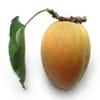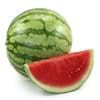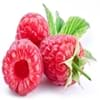Health Benefits
Cancer prevention, Heart care, Increases metabolic rate, Reduces stress, Treatment of dysentary, Treatment of skin Diseases
Cancer prevention, Heart care, Heat stroke treatment, Improves eye vision, Weight loss properties
General Benefits
Digestive aid, Maintains healthy cholesterol level, Strengthens bones
Anti-inflammatory properties, Boosts immune system, Cures cough, Digestive aid, Fights against infections, Improves blood circulation
Skin Benefits
Hydrates skin, Skin rejuvenation, Skin revitalization
Anti-aging benefits, Brightens and lightens complexion, Reduces wrinkles
Hair Benefits
Promotes longer and healthier hair
Promotes longer and healthier hair, Protects hair
Allergy Symptoms
Facial muscle tension, Pressure in sinus, Respiratory congestion, Runny nose, Sneezing, Tingling sensation in wrist and face
Abdominal pains, Anaphylaxis, Inflammation
Side Effects
Nausea, Vomiting, Might cause change of urine color
Diarrhoea, Might affect blood pressure level
Best Time to Eat
Best if taken as a breakfast (or empty stomach), As a snack in the late afternoon, Don't consume at night and before bed, Eat the fresh ones, avoid mixing with any other foods, don't eat after meal., Morning time (before lunch)
Along with meal, As a snack in the late afternoon, Don't consume at night and before bed, Morning time (before lunch)
Vitamin B5 (Pantothenic Acid)
Not Available
Vitamin C (Ascorbic Acid)
Vitamin K (Phyllochinone)
Phytosterol
Not Available
Calories in Fresh Fruit with Peel
Calories in Fresh Fruit without Peel
Not Available
Not Available
Calories in Frozen Form
Not Available
Calories in Canned Form
Not Available
Calories in Pie
Not Available
Type
Berry
Berry, Tree fruit
Season
Spring, Summer
Autumn, Winter
Varieties
Prime Ark, Prime Jim, Illini Hardy, Kiowa, Shawnee, Apache, Arapaho, Chester, Hull, Natchez, Navaho and Triple Crown and Von
Fuyu, Jiro, Gosho, Suruga, Hiratanenashi, Hachiya, Aizumishirazu, Yotsumizo, Yokono, Costata, Ormond and Tamopan
Color
Purplish black
Orange, Red, Yellow
Inside Color
Magenta
Orange
Origin
Asia, Europe, North America, South America
Burma, China, India, Japan
Soil Type
Well-drained
Sandy loam, Well-drained
Climatic Conditions
Dry, Warm to hot climate
Can tolerate wide range of climates
Facts about
- There are around 2000 varieties of blackberries throughout the world.
- 80-85 degrees is the ideal temperature for its production.
- Leaves of blackberry tree are used to treat sore throats and mild inflammation of the gums.
- Unripe persimmons contain lots of tannin which is used to brew sake & to preserve wood in Japan.
- A small non-edible fruit of persimmon tree is crushed with water, the solution is painted on paper & used to repel mosquitoes.
Spirits
Yes
Not Available
Cocktails
Yes
Not Available
Top Producer
United States of America
China
Other Countries
China, New Zealand, Serbia, South Africa
Azerbaijan, Brazil, Israel, Italy, Japan, Pakistan
Top Importer
United States of America
United States of America
Top Exporter
Mexico
Japan
Botanical Name
Rubus Fruticosus
Diospyros kaki
Synonym
Rubus Millspaughii or Rubus Laciniatus
Not Available
Subkingdom
Tracheobionta
Tracheobionta
Division
Magnoliophyta
Magnoliophyta
Class
Magnoliopsida
Magnoliopsida
Subclass
Rosidae
Dillenhidae
Family
Rosaceae
Ebenaceae
Species
Rubus fruticosus
D. kaki
Generic Group
Rose
Not Available
Compare Blackberry and Japanese Persimmon
It is important compare Blackberry and Japanese Persimmon as both the fruits have a different nutritional value. Their comparison can be done on the basis of their vitamin and mineral content, calories, benefits as well as characteristics, making it easier for us to choose the best fruit for our diet. Their general health benefits are as follows:
Blackberry Benefits: digestive aid, maintains healthy cholesterol level and strengthens bones.
Japanese Persimmon Benefits: anti-inflammatory properties, boosts immune system, cures cough, digestive aid, fights against infections and improves blood circulation.
Fruits are also used as a remedy for various hair problems. The hair benefits of Blackberry are: promotes longer and healthier hair and hair benefits of Japanese Persimmon are: promotes longer and healthier hair and protects hair. Some fruits are known to cause allergic reactions. The allergy symptoms of first fruit are: facial muscle tension, pressure in sinus, respiratory congestion, runny nose, sneezing and tingling sensation in wrist and face and the symptoms of second fruit are: abdominal pains, anaphylaxis and inflammation. Get sorted Blackberry vs Japanese Persimmon comparison with the help of fruit comparison tool by fruitvs.com.









